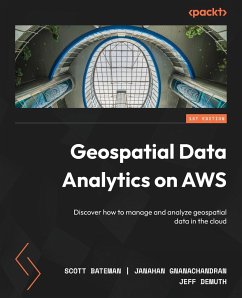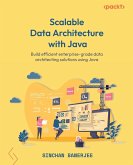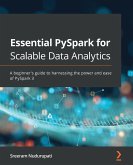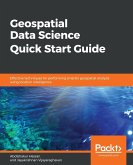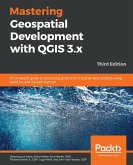Build an end-to-end geospatial data lake in AWS using popular AWS services such as RDS, Redshift, DynamoDB, and Athena to manage geodata Purchase of the print or Kindle book includes a free PDF eBook. Key Features:Explore the architecture and different use cases to build and manage geospatial data lakes in AWS Discover how to leverage AWS purpose-built databases to store and analyze geospatial data Learn how to recognize which anti-patterns to avoid when managing geospatial data in the cloud Book Description: Managing geospatial data and building location-based applications in the cloud can be a daunting task. This comprehensive guide helps you overcome this challenge by presenting the concept of working with geospatial data in the cloud in an easy-to-understand way, along with teaching you how to design and build data lake architecture in AWS for geospatial data. You'll begin by exploring the use of AWS databases like Redshift and Aurora PostgreSQL for storing and analyzing geospatial data. Next, you'll leverage services such as DynamoDB and Athena, which offer powerful built-in geospatial functions for indexing and querying geospatial data. The book is filled with practical examples to illustrate the benefits of managing geospatial data in the cloud. As you advance, you'll discover how to analyze and visualize data using Python and R, and utilize QuickSight to share derived insights. The concluding chapters explore the integration of commonly used platforms like Open Data on AWS, OpenStreetMap, and ArcGIS with AWS to enable you to optimize efficiency and provide a supportive community for continuous learning. By the end of this book, you'll have the necessary tools and expertise to build and manage your own geospatial data lake on AWS, along with the knowledge needed to tackle geospatial data management challenges and make the most of AWS services. What You Will Learn:Discover how to optimize the cloud to store your geospatial data Explore management strategies for your data repository using AWS Single Sign-On and IAM Create effective SQL queries against your geospatial data using Athena Validate postal addresses using Amazon Location services Process structured and unstructured geospatial data efficiently using R Use Amazon SageMaker to enable machine learning features in your application Explore the free and subscription satellite imagery data available for use in your GIS Who this book is for: If you understand the importance of accurate coordinates, but not necessarily the cloud, then this book is for you. This book is best suited for GIS developers, GIS analysts, data analysts, and data scientists looking to enhance their solutions with geospatial data for cloud-centric applications. A basic understanding of geographic concepts is suggested, but no experience with the cloud is necessary for understanding the concepts in this book.

